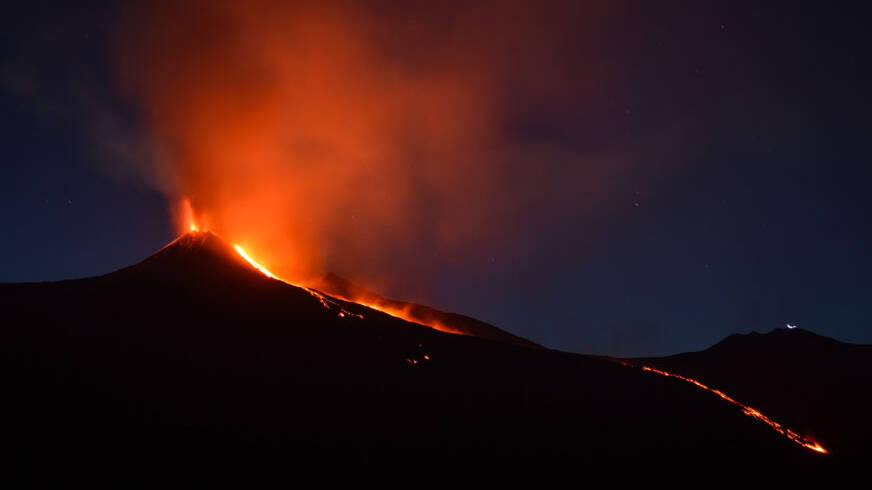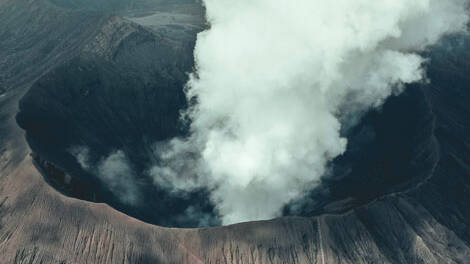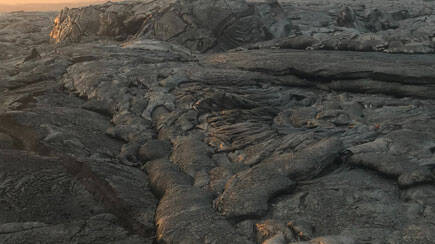Global volcanic unrest detection and alerting
Interferometric Synthetic Aperture Radar (InSAR) can systematically provide ground deformation estimations over volcanic areas. Fringes detected in wrapped interferograms over volcanoes indicate the onset of deformation, which is usually due to magma chamber fill-in at depth – an activity which is considered as precursor for a potential eruption. This Use Case aims to develop an automatic volcanic unrest alert service based on the detection of such precursor activity. We research DL architectures that can automatically detect the presence of ground deformation triggered by volcanic unrest within wrapped interferograms, exploring the potential of using complex SAR data. This early warning is of great importance for civil protection authorities, as it can enhance their response effectiveness and allow scientists to deploy critical in-situ monitoring equipment to assess more accurately volcanic hazards.
Our system is synchronized with the COMET-LiCS Sentinel-1 InSAR portal (https://comet.nerc.ac.uk/comet-lics-portal/) to acquire new data and store them in a local database. The information is updated every time a new dataset becomes available into LiCSAR. DeepCube focuses on the 44 most active volcanoes in the world. Having identified their location, we automatically collect and preprocess the respective interferograms and feed them to our trained model for binary classification: ground deformation or no deformation. We work towards a global solution for the task of volcanic unrest detection.
Hephaestus: A large scale multitask dataset towards InSAR understanding
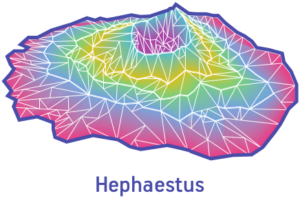
Hephaestus is the first of its kind, manually annotated dataset that consists of 19,919 individual Sentinel-1 interferograms acquired over 44 different volcanoes globally, which are split into 216,106 InSAR patches. The annotated dataset is designed to address different computer vision problems, including volcano state classification, semantic segmentation of ground deformation, detection and classification of atmospheric signals in InSAR imagery, interferogram captioning, text to InSAR generation, and InSAR image quality assessment.
The code, data and models are available in the project’s GitHub repository: https://github.com/Orion-AI-Lab/Hephaestus
Hephaestus was published at the Computer Vision and Pattern Recognition (CVPR) 2022 workshop EarthVision.
You can access and download the publication here.
Annotated InSAR datasets for volcanic unrest detection
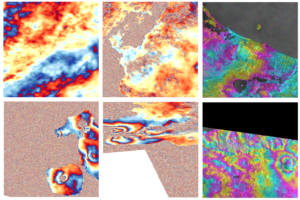
These datasets have been published in the context of our work on Self-Supervised Contrastive Learning for Volcanic Unrest Detection (https://ieeexplore.ieee.org/document/9517282).
To create the C1 dataset we downloaded and manually annotated InSAR products from the COMET-LiCS Sentinel-1 InSAR portal (https://comet.nerc.ac.uk/comet-lics-portal/), which has been developed by the Centre for Observation and Modelling of Earthquakes, Volcanoes and Tectonics. The S1 dataset has been provided by the University of Bristol and is part of the work of Anantrasirichai et al (https://doi.org/10.1029/2018JB015911).
To download the datasets please visit https://github.com/DeepCube-org/uc4a-notebooks
Publications
Nikolaos Ioannis Bountos, Ioannis Papoutsis, Dimitrios Michail, Nantheera Anantrasirichai, Self-Supervised Contrastive Learning for Volcanic Unrest Detection, IEEE Geoscience and Remote Sensing Letters, 2021, https://doi.org/10.1109/LGRS.2021.3104506
Nikolaos Ioannis Bountos, Dimitrios Michail, Ioannis Papoutsis, Learning from Synthetic InSAR with Vision Transformers: The case of volcanic unrest detection, IEEE Transactions on Geoscience and Remote Sensing, 2022, https://doi.org/10.48550/arXiv.2201.03016
N.I. Bountos, I. Papoutsis, D. Michail, A. Karavias, P. Elias, I. Parcharidis, Hephaestus: A large scale multitask dataset towards InSAR understanding, Proceedings of the IEEE/CVF Conference on Computer Vision and Pattern Recognition (CVPR) EarthVision, 2022, https://doi.org/10.48550/arXiv.2204.09435
Bountos, N. I., Michail, D., Herekakis, T., Thanasou, A., and Papoutsis, I.: Pluto: A global volcanic activity early warning system powered by large scale self-supervised deep learning on InSAR data, EGU General Assembly 2023, Vienna, Austria, 24–28 Apr 2023, EGU23-5913, https://doi.org/10.5194/egusphere-egu23-5913
Use Case Leader
National Observatory of Athens
Interested in learning more? Contact us!
Dr. Ioannis Papoutsis, [email protected]
Nikolaos-Ioannis Bountos, [email protected]


